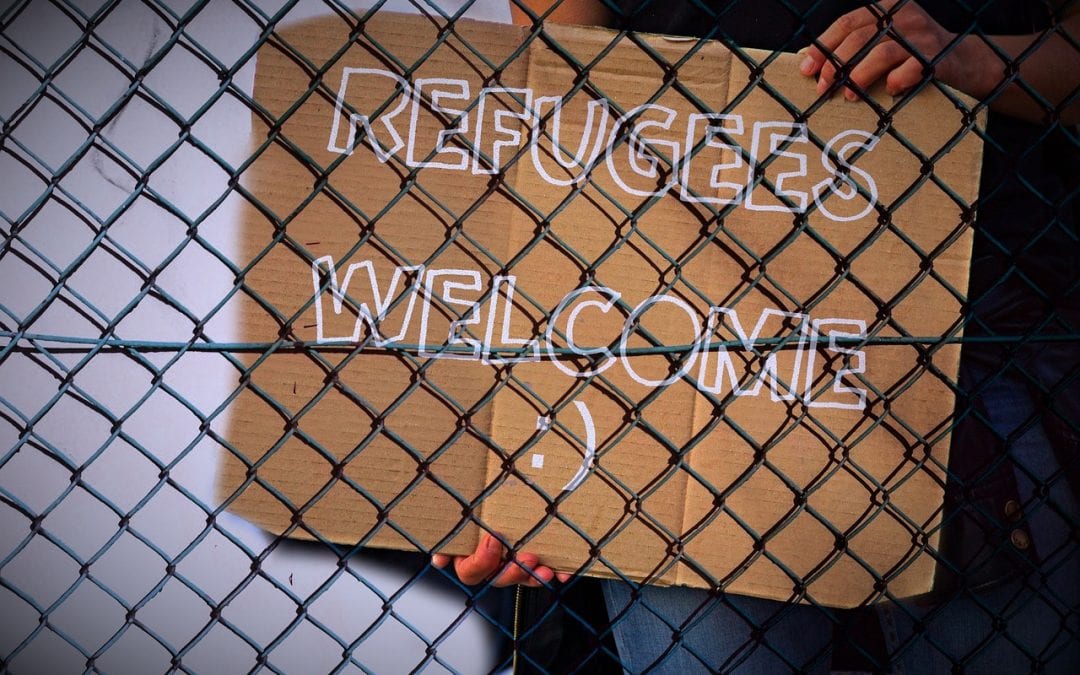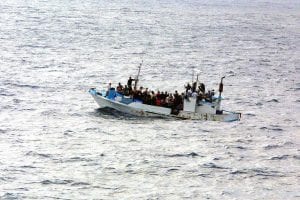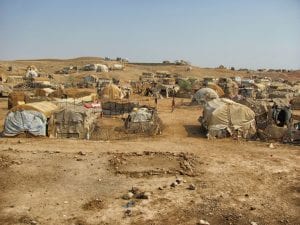By Dr Tim Fadgen –
As local and regional conflicts persist around the globe, and as environmental disasters become more frequent and increasingly severe, refugees are on the move. Concurrently, many nations and states around the world have signalled that people seeking refuge are not welcome within their borders. I know this because I have worked with refugees in settlements and camps, and I have come to know those few and fortunate amongst them who have managed to permanently resettle in the United States.
Refugee camps can be every bit as terrible as you might imagine; filled with millions of forgotten and marginalized people living in temporary structures with few opportunities to learn, to thrive, to live meaningful lives. New Zealanders need only scan the pages of the daily papers or watch or listen to the evening news to see that a great wave of anti-refugee sentiment is rising across Australia, Europe and the United States. Countries throughout the world have been revisiting their immigration policies with an eye toward making them more restrictive. This is why the New Zealand government’s recent announcement that it intends to double its annual refugee quota to 1,500 by 2020 is so striking. The story, seldom told, about New Zealand’s past reluctance to receive and shelter refugees contrasts sharply with today’s headlines.
The 1951 Refugee Convention defines a refugee as “someone who has been forced to flee his or her country because of persecution, war or violence.” Persons considered refugees must also have a “well-founded fear of persecution for reasons of race, religion, nationality, political opinion or membership in a particular group.” New Zealand ratified the Convention in 1960 and a 1967 Protocol in 1973. As a result, signatories such as New Zealand are obliged to offer protection to people declaring refugee status and to offer asylum to those meeting the criteria. The challenge for refugees, and for New Zealand, of course, is that New Zealand is difficult to reach. Barriers, such as the cost of travel and possession of a visa to enter the country, serve as effective obstacles—like having an enormous net above the moat that already surrounds us–to prevent New Zealand from becoming a nation of first arrival for those seeking refugee status.
The modern international refugee system has long been described as fraught and problematic. The creators of the system during and after World War II, sought to respond to the immediate crisis of war and genocide in Europe and the massive numbers of displaced persons in the wake of the fighting. Many nations, including New Zealand, accepted some of the first tranche of refugees in the years just prior to and immediately following the cessation of hostilities. Many scholars have observed, however, that over the years, as the locus of conflict shifted from Europe proper to its former and newly independent colonies, the system became divided in two: wealthy countries were willing to send funds through organisations like the United Nations High Commissioner for Refugees (UNHCR) to assist refugees and internally displaced persons in countries like Thailand (fleeing Vietnam, Cambodia and Laos) and nations throughout Africa, such as Uganda (whose people currently flee the conflict in South Sudan and joining others from Democratic Republic of Congo and elsewhere). European, North American nations, Australia and New Zealand were far less willing to serve as host nations for permanent resettlement.
Nations throughout Europe, North America, Australia and New Zealand contributed a share of support for refugees, both as matters of national policy, in the form of international aid funding and by their citizens consistently responding to repeated appeals for charitable support. But as a Listener report last year noted, the New Zealand government has fallen short of the giving targets of 0.7% of GDP set by the United Nations Development Programme (UNDP), contributing only about 0.27% through the Ministry of Foreign Affairs and Trade. On the other hand, New Zealanders are among the most generous people in the world, having given well over $100 million per year to organisations with an international focus.
The result of this generosity, however, many countries of first arrival, those to which refugees are able to walk or float in most instances, have become long-term warehouses for these women, men and children in desperate straits. Each of them arrives not only with the things he or she carries, but also with dreams of a safe and prosperous future. In her recent and powerful reflection concerning the dehumanizing experience of living as a refugee, Dina Nayeri convincingly demonstrates that people fleeing violence and disaster in no way wish to be parted from their homes, to be uprooted and put in positions of abject poverty, forced to accept the charity of others. Refugee camps and settlements can be dreary places as a result of the system’s failures. And make no mistake, the system has failed refugees. These camps were never meant to be permanent. And the journey from refugee to resettled citizen is complicated, and often undermined, by the very system designed to accommodate the transition from the former to the latter.
Given the practical geographical and legal barriers for refugees hoping to reach New Zealand, our island nation has long had a refugee quota that limits the number of refugees it accepts from UNHCR every year; historically this figure has been 750 people per year. Exceptions have occurred for special circumstances, and this figure has been exceeded slightly from time to time. The most recent increases have occurred as a result of the Syrian civil war and the resulting surge in refugees. In 2016 the National-led government first proposed an emergency increase from 750 to 1,000. Ongoing advocacy by a number of individuals and organisations, including Amnesty International, World Vision and the Refugee Council of New Zealand and the Labour party’s campaign declaration to double the quota to 1,500 eventually proved successful, notwithstanding the drama created by Labour’s coalition partner, New Zealand First, which, while not anti-refugee, certainly campaigned on a far more restrictive immigration policy than Labour.
In the end, the Labour-led coalition announced that by 2020, New Zealand would in fact ‘double the quota’ and take on 1,500 refugees. At the same time, other innovative policy initiatives continue to advance and gather support, including a pilot program based on a highly successful Canadian community-sponsorship model, whereby New Zealand families agree to work directly with new refugees as they resettle here. While those who comprise the enormous backlog of refugees await opportunities to live their lives beyond the temporary, tarpaulin dwellings burned indelibly into our minds when we think of the word ‘refugee,’ it is a welcome development that New Zealand is again swimming against this global tide and doing its part to restore dignity and hope for people uprooted by global conflict and looking to begin anew as citizens of New Zealand.
Tim Fadgen served as a Mellon Foundation/ACLS fellow with American Refugee Committee and has worked on refugee, asylum and immigration issues in the United States and New Zealand, including representing asylum seekers in the United States. He is currently a professional teaching fellow in Politics and International Relations at the University of Auckland and a research fellow with the Public Policy Institute.



